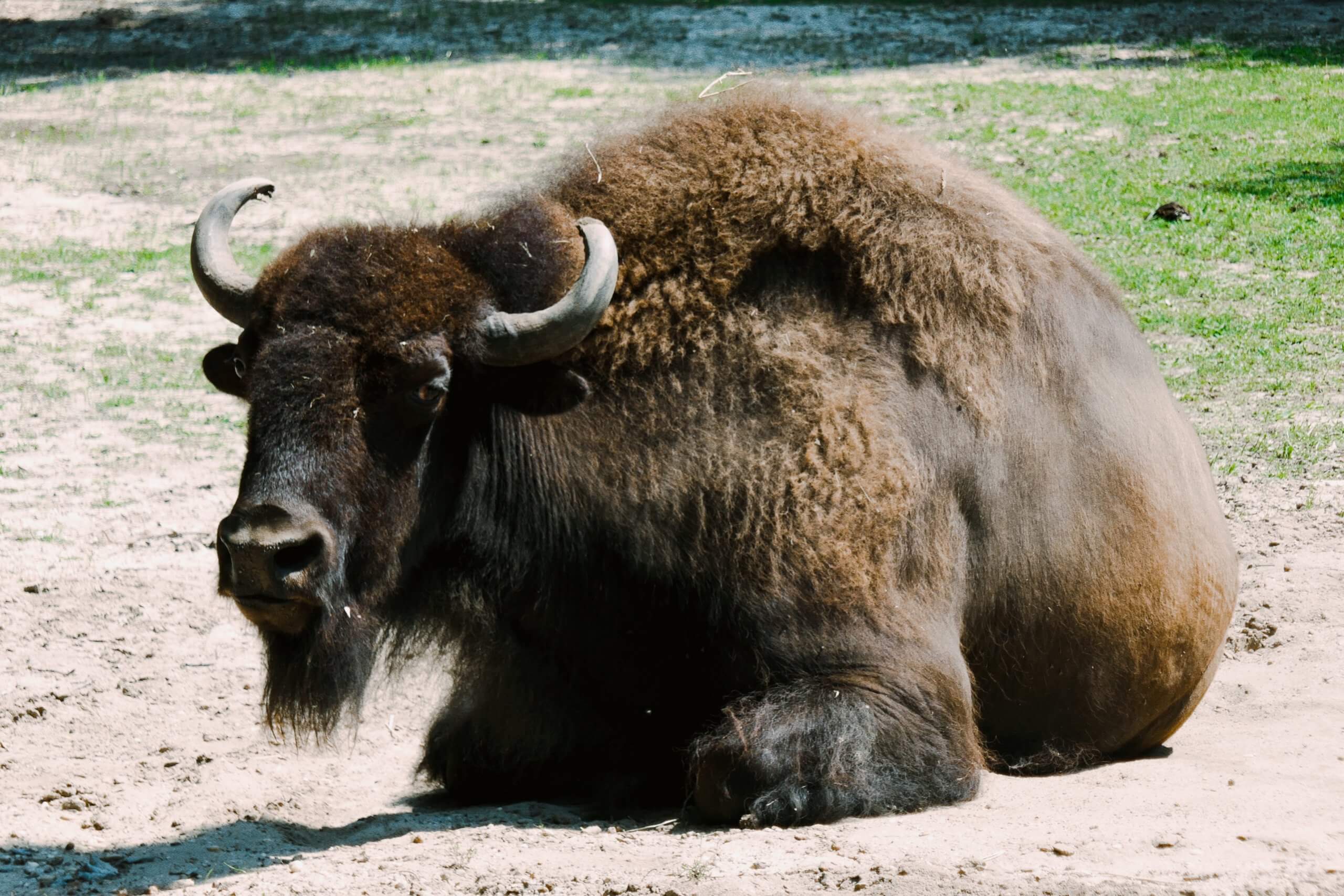COURT HOUSE – Peter Cyr has worked “just about everywhere” at the Cape May County Zoo, but has found a home caring for camels, alpacas, deer, and the biggest “hoofstock” at the zoo: The mighty bison.
Peter spoke to the Herald as he went about his daily tasks, which, during our interview, meant cleaning debris and raking sticks from the camel habitat.
The zoo’s two camels, Walter and Marty, followed Peter closely as he walked. They hounded him for attention in a way that might seem familiar to most pet owners.

Both camels – Walter, a Bactrian camel with two humps, and Marty, a Dromedary camel with just one hump – stuck their faces close to Peter as we spoke. Camels are deeply social animals, he said.
“If you have a camel by itself, that’s deleterious to its mental health,” Peter said.
Every group of camels has a leader that is larger and stronger than the rest. Marty plays that role here, but they both understand that Peter is the one in charge.
Peter gestured to the large humps on each camel’s back. These mounds serve as fat storage that camels need to survive long bouts of foodlessness.
“It’s basically food storage,” Peter said. “It’s a lipid matrix that they can metabolize – they can last 10 or more days without food, and a week without water.”
Those bumps are essential survival tools in the harsh desert, but in the comfort of the zoo, the stored nutrients are redundant.
Peter must feed the camels throughout the day, sometimes as often as every 30 minutes.
“They’re convinced that they are always hungry. It’s a careful balancing act of keeping them the right weight because they will eat anything and everything all the time,” Peter said.

Feed them too much and they’ll get fat. But if the gaps between mealtimes are too long, “they might start eating a tree,” Peter said, gesturing to the fencing that guards the tree trunks in the camel enclosure.
Walter and Marty are especially friendly because they were bottle-fed from infancy.
“They didn’t learn ‘camel’ as children, and my ‘camel’ isn’t very good,” Peter said.
The frequent, positive interactions that Walter and Marty have with humans make them friendlier than average, but Peter stressed that he must always stay alert.
“You have to be on your toes all the time. There are always surprises you have to respond to,” he said.
A similar dynamic plays out with the zoo’s seven bison. Buttons, a small female bison, followed the fence line hoping for food and attention as Peter walked by. Like Walter and Marty, Buttons was bottle-fed from birth.
But these animals can be fierce. All the male bison except for one, Sire, were neutered to prevent aggression problems within the herd. This is done on-site at the zoo by one of two full-time veterinarians.

“These are not fuzzy, friendly creatures,” Peter said. “If you see one in the wild, don’t approach it!”
Bison will look for signs of weakness in other animals and will take that chance to assert their dominance, he said.
Because of the danger they might pose to the public, Peter and his fellow zookeepers are always alert to the fencing that surrounds their enclosure. All the zoo’s large animals are double fenced in, a lesson learned after four bison escaped nearly two decades ago.
Ed Runyon, parks director, said that someone snuck into the zoo on “Mischief Night,” Oct. 30, 1996, and cut the large bolts that kept the bison enclosure shut.
“Someone called us in the middle of the night and said that our bison were eating people’s gardens, munching on roses,” Runyon said.
Security measures are much more rigid today. Cameras are found across the zoo, and more security officers are employed full-time.
“That was a very different time,” Runyon told the Herald.
There has not been a significant escape in the years since. You can still find a herd of bison in Cape May County, but they aren’t roaming Middle Township, munching on roses.
Visit camels and bison at the Cape May County Zoo, which is open every day of the year.








